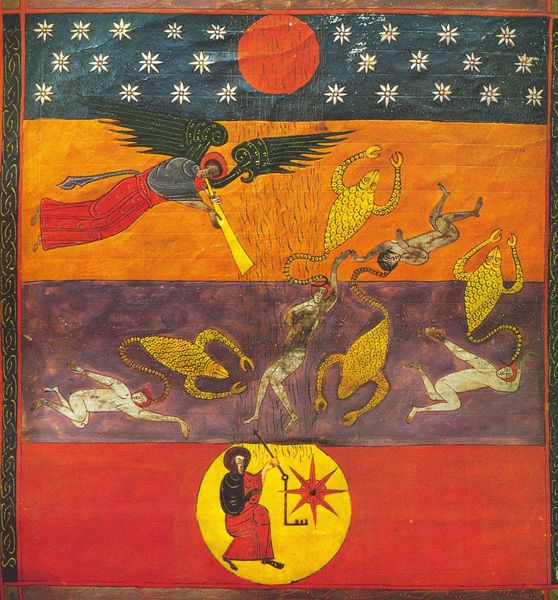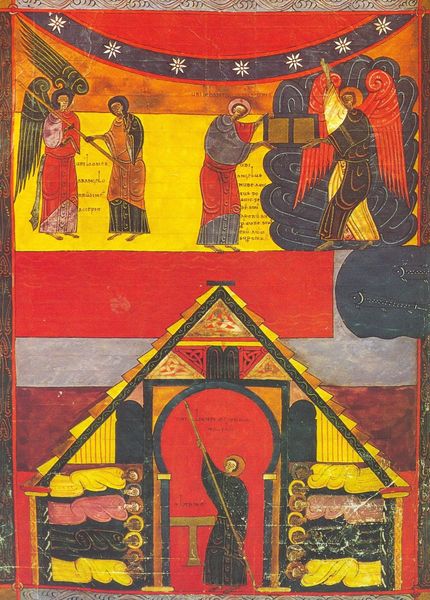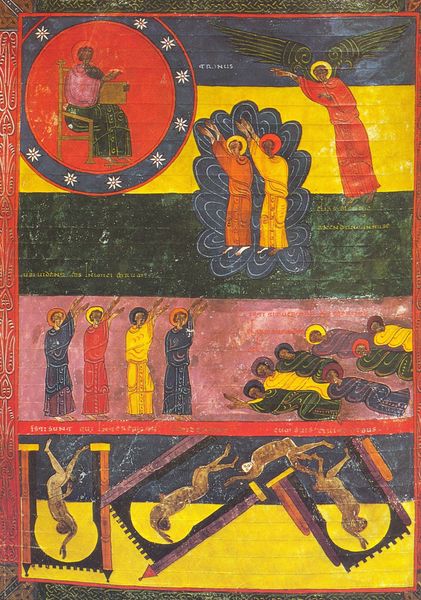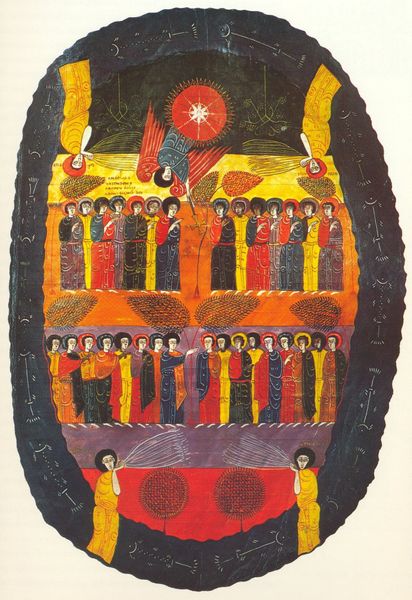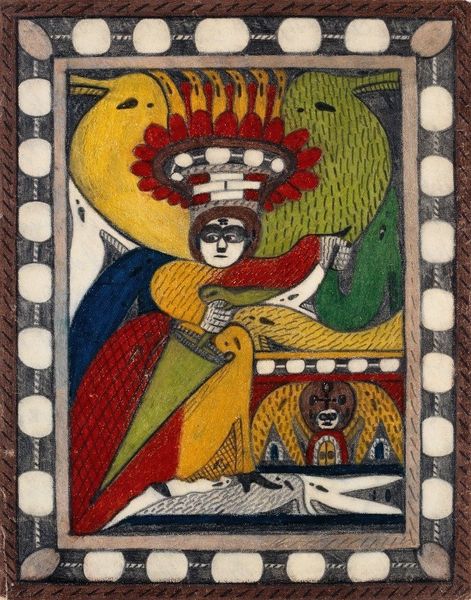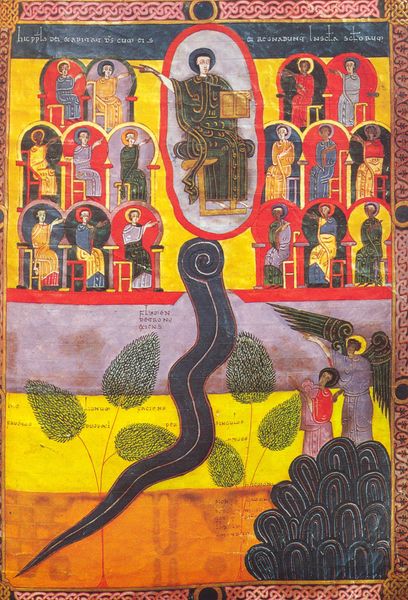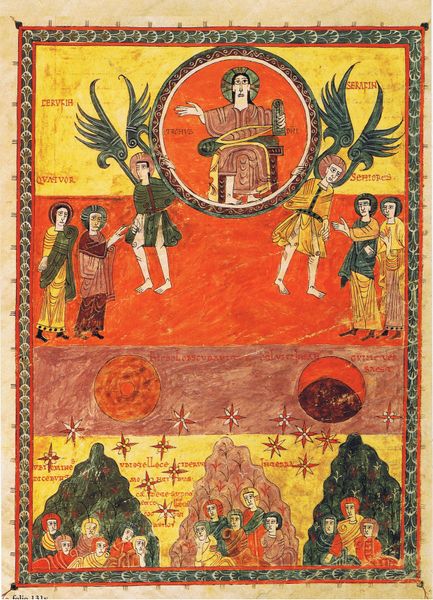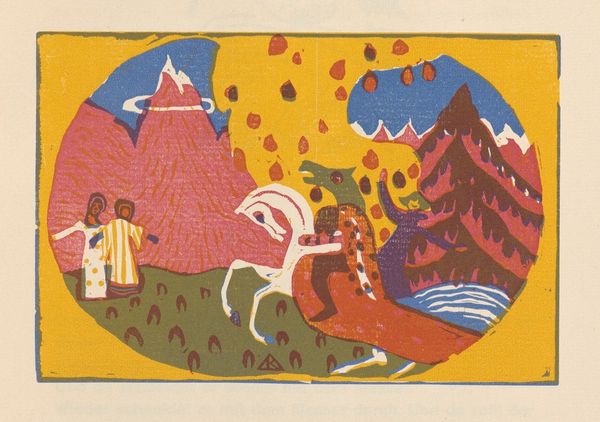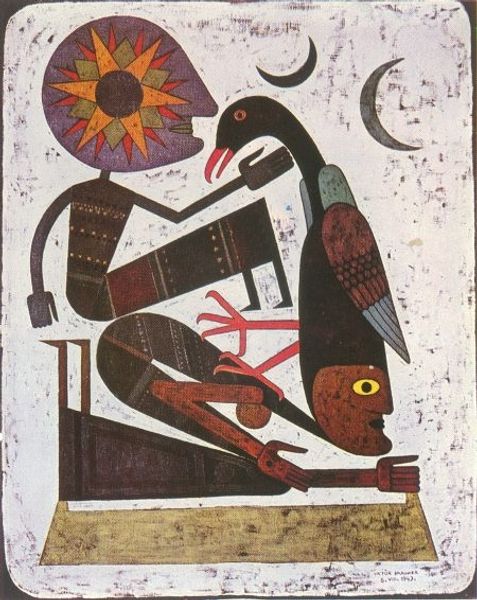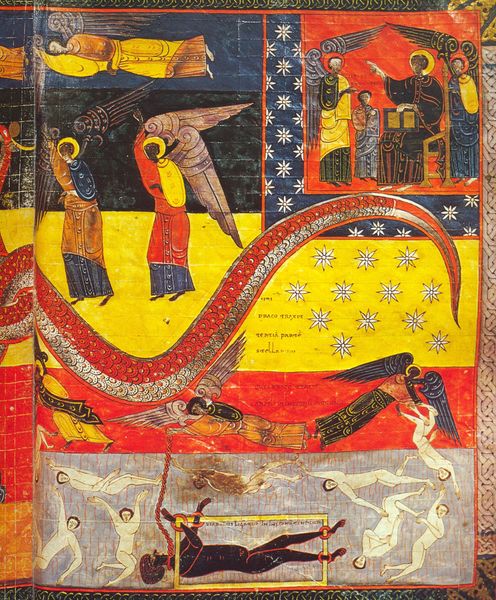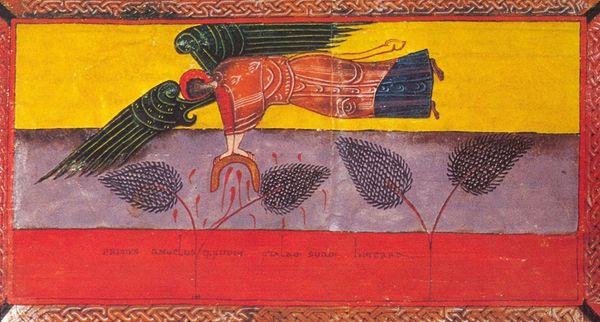
tempera, painting
#
medieval
#
narrative-art
#
tempera
#
painting
#
figuration
#
romanesque
#
painting art
Copyright: Public domain
Editor: This is an illumination from the "Beatus de Facundus," artist Facundus. It's a tempera painting, with these bold colors. The organization into stacked registers gives it a sense of visual hierarchy and… well, density. What can you tell me about it? Curator: We can begin by acknowledging the tempera medium. Considering the labour involved in creating such vivid pigments, we need to see how it served specific social purposes. Do you think these costly materials reflect a commitment to theological doctrines? Editor: Possibly! It feels like the illuminator is underscoring the importance and solemnity of what's being portrayed with those resources. What’s interesting is how the tempera technique is utilized. Curator: Exactly! The layering, the precision – it tells us something about workshop practices and the accessibility of knowledge and artistry. The level of detailing must have taken a collaborative studio to accomplish. What’s your read? Editor: Right, the repeated motifs seem to also highlight this organized artistic manufacture, where these motifs point toward standardized designs being utilized in production. How might the commissioning patron affect these patterns of artistic creation? Curator: Good question! What if the patron were, say, a royal court eager to project its cultural capital and Christian orthodoxy? That would then further standardize the patterns of production for years. Editor: It’s fascinating to consider this page as less a singular artwork, and more of a node within networks of power, labour, and materiality. Thanks for opening up this perspective! Curator: And thanks for considering how artistic creation intertwines production practices, commissioned artwork, and cultural dissemination of knowledge and artistry.
Comments
No comments
Be the first to comment and join the conversation on the ultimate creative platform.

